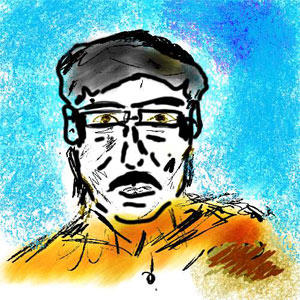This morning was overcast. My energy level was not as high as it has been in the last few weeks. The alarm actually go to me this time.
Two things happened. I did not get up immediately and I did not go outside either to walk. My drowsiness level therefore remained a little higher than usual.
Diffused light such as that produced by overcast day is great for photography. It's also darker as far Exposure Values (EVs) are concerned. Apparent sunrise is much later than normal even though it has already happened by 6:00AM.
Lesson learned. Even if I don't go running, I must step outside and catch the light for a little bit. Melatonin is reduced or increased by the amount of light present.
This is an excerpt from Wikipedia on Melatonin:
http://en.wikipedia.org/wiki/Melatonin
"
... melatonin is produced by
pinealocytes in the
pineal gland (located in the
brain) and also by the
retina,
lens and
GI tract. It is naturally synthesized from the
amino acid tryptophan (via synthesis of
serotonin) by the
enzyme 5-hydroxyindole-O-methyltransferase.Production of melatonin by the pineal gland is under the influence of the
suprachiasmatic nucleus (SCN) of the
hypothalamus,which receives information from the retina about the daily pattern of light and darkness. Both SCN rhythmicity and melatonin production are affected by non-image-forming light information traveling through the recently-identified
retinohypothalamic tract (RHT).The light/dark information reaches the SCN via retinal
photosensitive ganglion cells, intrinsically photosensitive
photoreceptor cells, distinct from those involved in image forming (that is, these light sensitive cells are a third type in the retina, in addition to
rods and
cones). These cells represent approximately 2% of the retinal ganglion cells in humans and express the photopigment
melanopsin.
[11] The sensitivity of melanopsin fits with that of a vitamin A-based photopigment with a peak sensitivity at 484 nm (blue light).
[12] This photoperiod cue entrains the
circadian rhythm, and the resultant production of specific "dark"- and "light"-induced neural and endocrine signals regulates behavioral and physiological
Circadian rhythms.
Melatonin may also be produced by a variety of peripheral cells such as
bone marrow cells,
[13][14] lymphocytes and
epithelial cells.
Usually, the melatonin concentration in these cells is much higher than
that found in the blood but it does not seem to be regulated by the photoperiod.
Melatonin is also synthesized by various
plants, such as
rice, and ingested melatonin has been shown to be capable of reaching and binding to melatonin
binding sites in the brains of
mammals.
[15][16]' ...Light dependence
Production of melatonin by the pineal gland is inhibited by light and permitted by darkness.
For this reason melatonin has been called "the hormone of darkness" and
its onset each evening is called the Dim-Light Melatonin Onset (DLMO).
Secretion of melatonin as well as its level in the blood, peaks in the
middle of the night, and gradually falls during the second half of the
night, with normal variations in timing according to an individual's chronotype....
"





